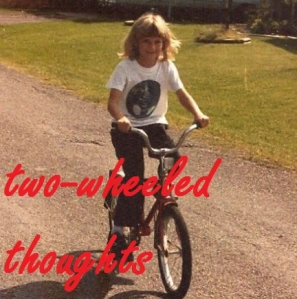Thank you to my mother for sending me this interesting article from the New York Times Magazine. Sam Anderson riffs, “What I Really Want Is Someone Rolling Around in the Text.”
The idea is this: for Anderson, the best and defining part of reading is writing in the margins. He jots notes and underlines and otherwise marks up his texts, which enriches his reading as he goes, as well as his future readings. And he’s concerned that in an age of e-readers, his “‘marginalia’ – a self-consciously pompous Latinism intended to mock the triviality of the form” – will perish. Because you can’t write on an e-reader. Yet.
And then Anderson changes key and explores all the wonderful possibilities the e-reader offers. Surely a stylus that allows one to “write” – handwrite – in the margins of an e-reader isn’t far off (I’m not up on these things, maybe it’s already on). But Anderson theorizes about the shareability of these margin notes, and this is where he catches my imagination.
I’m not a big fan of marginalia, myself. I had an English teacher in high school – a wonderful teacher, who I loved and who taught me so much of the love of literature and the small understanding of it that I enjoy today. She taught margin notes. She took up our personal copies of books we read for class (my first experience with Hemingway, The Sun Also Rises, for example) and actually graded us on the highlighting and margin-note-taking we did. But it didn’t catch on for me. I probably did annotate a few books after being in her class; but then I stopped, and thank goodness. These days it irritates me to no end to find margin notes in a book I’m reading – even if the notes are my own! (They tend to be from high school, which may be part of my irritation.) They distract me from what I’m trying to read – the book itself. I want to hear from the author, who I assume wrote everything she or he wanted to in the text of the dern thing. Footnotes are welcome. But I’m not generally interested in some third party’s footnote, thank you very much.
But. Anderson offers me tantalizing concepts like… “reading, say, Adventures of Huckleberry Finn and touching a virtual button so that — ping! — Ernest Hemingway’s marginalia instantly appears, or Ralph Ellison’s, or Mary McCarthy’s.” Wow! (Okay, maybe he did grab my interest with Hemingway; but the others are almost as tempting :).)
“Old-school marginalia was – to put it into contemporary cultural terms – a kind of slow-motion, long-form Twitter, or a statusless, meaning-soaked Facebook, or an analog, object-based G-chat. (Nevermind: it was social, is my point.)” Well put, sir. I get it now. I get the sharing of margin notes – on purpose, that is. I don’t appreciate the random margin notes of strangers left in public library books I check out, mistakenly correcting a published author’s already-correct grammar, and then being corrected again by the next library patron. I do NOT want that. But Anderson’s way is better: with an e-reader with marginalia-sharing capabilities, I could get only the notes I wanted. And when I wanted – so that I could read a text first unsullied, and then consult my friends or admired (even dead!) authors for their thoughts.
I also appreciate the larger theme that I take away from Anderson’s article, one that librarians (and booksellers, and publishers, and authors…) are discussing a lot these days. Reading and writing are changing; the e-reader format offers a great many reasons for concern – are we going to go out of business? But it also offers opportunities. I can’t begin to think of them all; luckily there’s a lot of thinking going on out there. Our challenge, as librarians, booksellers, publishers, writers, readers, consumers, is to be creative about the ways in which e-readers (and a host of technological changes) can offer us new and positive change, rather than just bemoaning what it’s costing us. So, good job Mr. Anderson, and thanks Mom. 🙂
Filed under: book reviews, musings | Tagged: marginalia |







I do like the idea in theory of all kinds of interactive reading experiences, but I’m still not sure about e-reading. I’ll do it here and there, but the eyestrain isn’t insignificant in my mind.
How about a printed book with tiny micro-sensors embedded so you could touch the page in the right spot and have the hologram of the added feature appear in front of you in mid-air? (OK, if that’s a little far-fetched, I can certainly see the embedded “button” activing material on your nearby television set or computer monitor.)
Yea, I’m not the least bit sold on the e-reader for myself personally. It wouldn’t surprise me if I got there someday… I resisted email too :). But I’m not ready for it. I love real books.
I love your idea and doubt that it’s all that far-fetched…
[…] about that, hm? Rather a different take on Sam Anderson’s concept that I discussed in yesterday’s post. Just thought you might be interested. I fully sympathize with Codrescu’s feelings about […]
[…] reader. I’m just glad I noticed before he took it home with him. [I've discussed marginalia here before. In a nutshell, I'm not a big […]